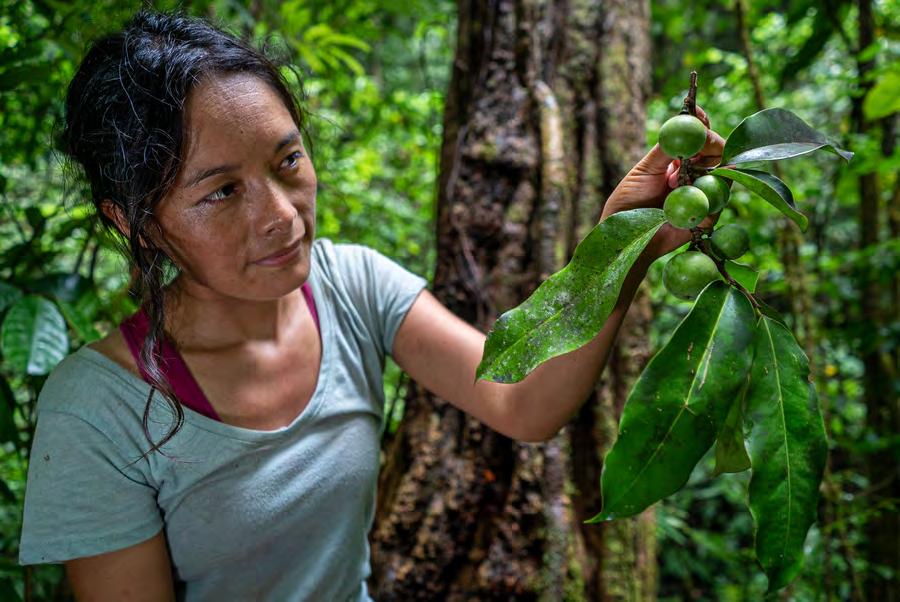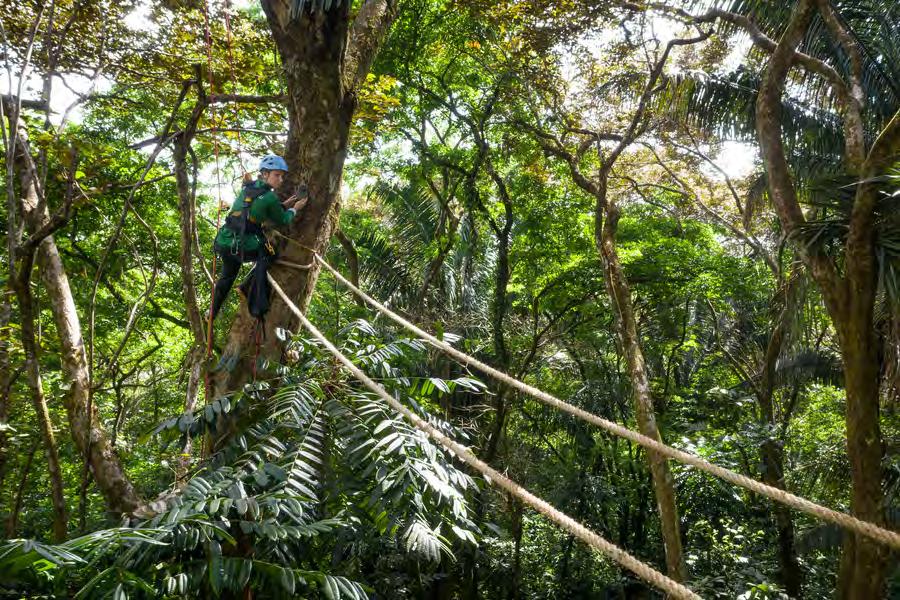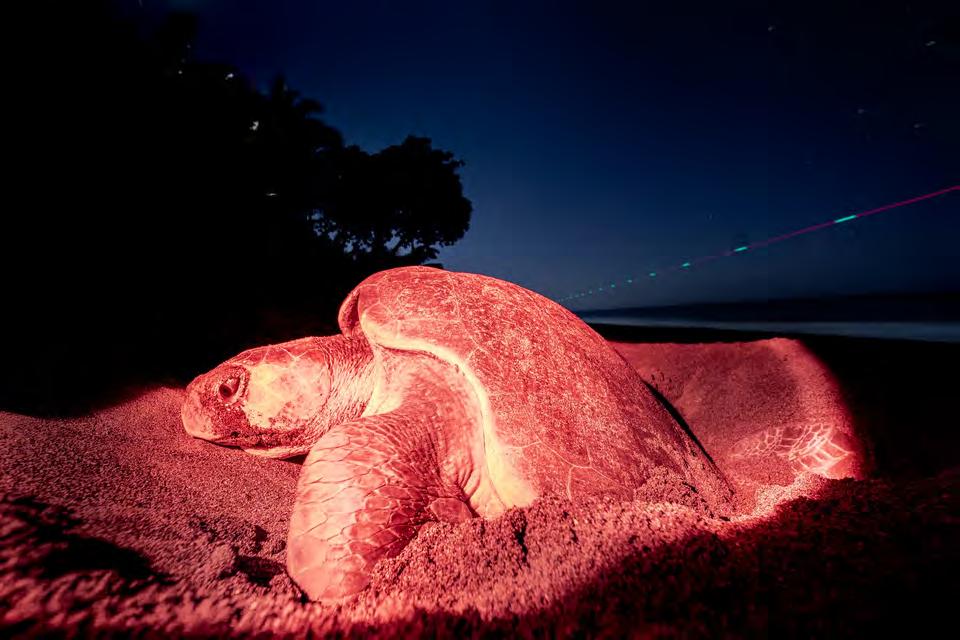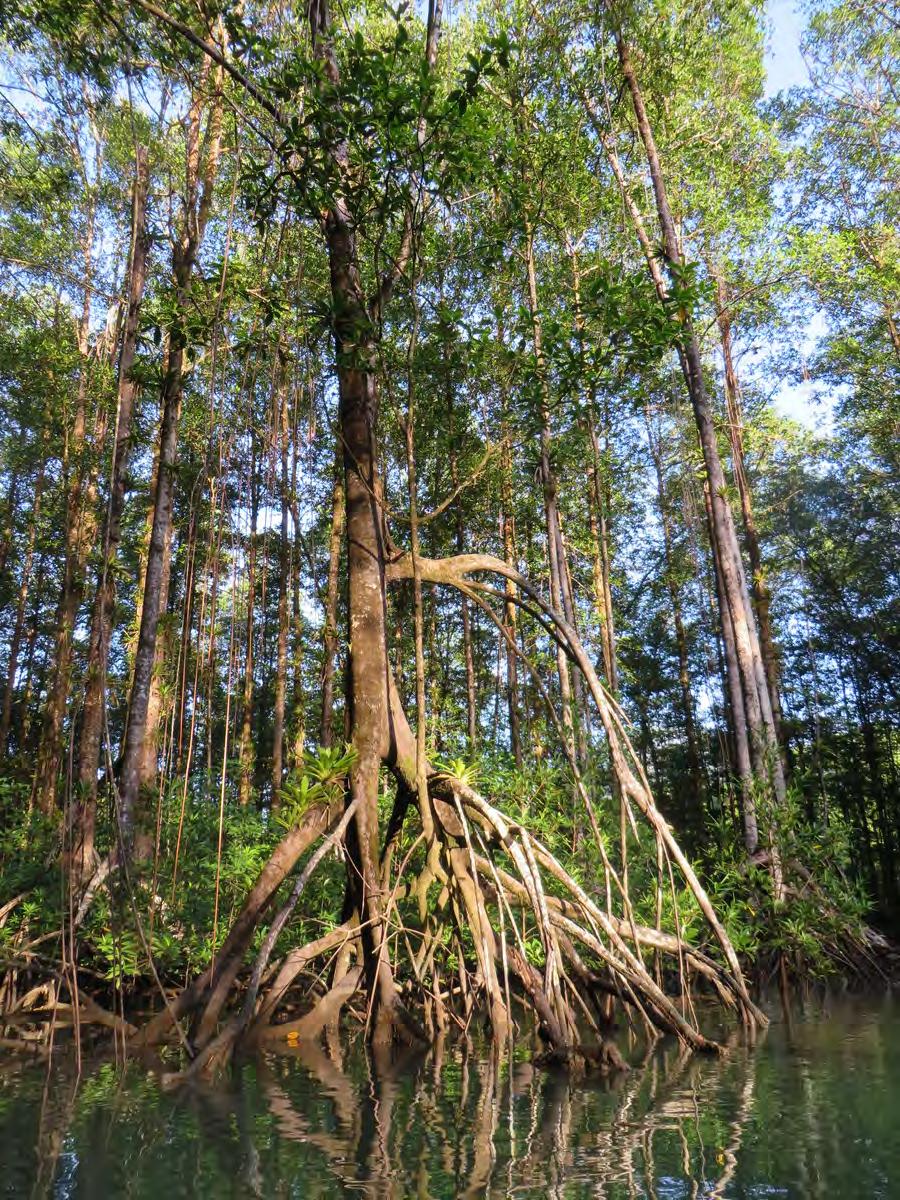
1 minute read
2022 SCIENTIFICIMPACT
Osa Conservation's efforts are guided by scientific knowledge and evidence, and the scientific output of our work is key to maximize our impact. In 2022, researchers from the Osa Conservation team contributed to four scientific papers published in peerreviewedjournals:
SavingALivingDinosaur:
ThefirstpropagationofoneofOsa'sraresttrees
June2022
This year our team was published in international scientific journal Tropical Conservation Science. Our work tells the story of the Pleodendron costaricense tree, a living dinosaur that was likely just a generation fromextinction-andisnowgrowingbythehundreds.

This research started years ago during our team's tough expeditions into Osa's rainforests on a mission to uncover more about the region's 10 most rare, native and threatened trees. Fast forward through years of trial and error, we now have over a hundred Pleodendron costaricense saplings growing in OC's Native Tree Nursery - thanks largely to our botanic expert Marvin, who was born and raised on the Osa andwhoselegacycontinuestoinspire.
We are happy to celebrate that this ancient species will remain among our forests and off the extinction list – just one more prime example of the power of conservation, science and the sheer pursuit of knowledge.Checkout thisvideo tolearnmore.
Ourteamhaspublishedatechnicalreportin Folia Primatologica, showcasing the preliminary results ofthe first12arborealwildlifebridgesweinstalled acrosstheOsaregion.
Thereportalsoprovincesvitalinformationonsite selection, bridge construction, installation time, and bridge costs in an effort to help guide conservationactionthroughoutthetropics.
Maintaining forests connectivity is crucial to keeping wildlife populations healthy, and arboreal bridges are one way we can do that. Information on implementing arboreal bridges is sparse, particularly for tropical rainforests in Latin America. Communicating this work will hopefully expand and evolve wildlife crossings to overcome thebarrierandthreatofroadsfortreetopwildlife.
Drone Monitoring Changes the Game for Sea Turtle Conservation July 2022
OsaConservation'smostrecentpublished researchhighlightstheuseofthethermal infraredsensordroneforseaturtlemonitoringat night-thefirstpublishedresearchonthetopic intheworld.Featuredin Frontiers in Conservation Science,thisresearchconcludes:
-Thermalcameradronescandetectseaturtles, hatchlings,wildlife,nestpredatorsandpoachers atnight,andcanalsodifferentiateseaturtle speciesbytheirtracks.

-Thethermaldroneismoreeffectiveat detectingseaturtlenestingactivitythanpeople patrollingby20%.
-Itsimplementationcanbenefitseaturtle programsworldwide,especiallyondangerous nestingbeacheswithhighpoachingrates.
Marine Protection for People & Wildlife July 2022
In collaboration with the National Geographic Pristine Seas team, Osa Conservation's Marine Advisor Dr. Noelia Hernandez co-authored a crucial piece of science that articulates the value of the Osa Peninsula's coastal ecosystems for people and wildlife, showcasing that a "logical conservation measure would be to expand the [Corcovado marine] reserve. The open access article highlights the importance of the Térraba Sierpe National Wetland for migratory marine fauna and keystone predators including scalloped hammerhead sharks. The mangroves also provide flood protection and help lessen the impacts of sedimentation and coastal erosion.
ThisiswhyOsaConservationfightsto:
Investigate, discover and disseminate the most impactful conservation practices for coastal ecosystems
Restore crucial habitat in the Térraba Sierpe NationalWetland&beyond

Work with local communities and the national government to create a Marine Protected Area in Southern Costa Rica's Pacific Ocean that would safeguardpeopleandwildlife.


